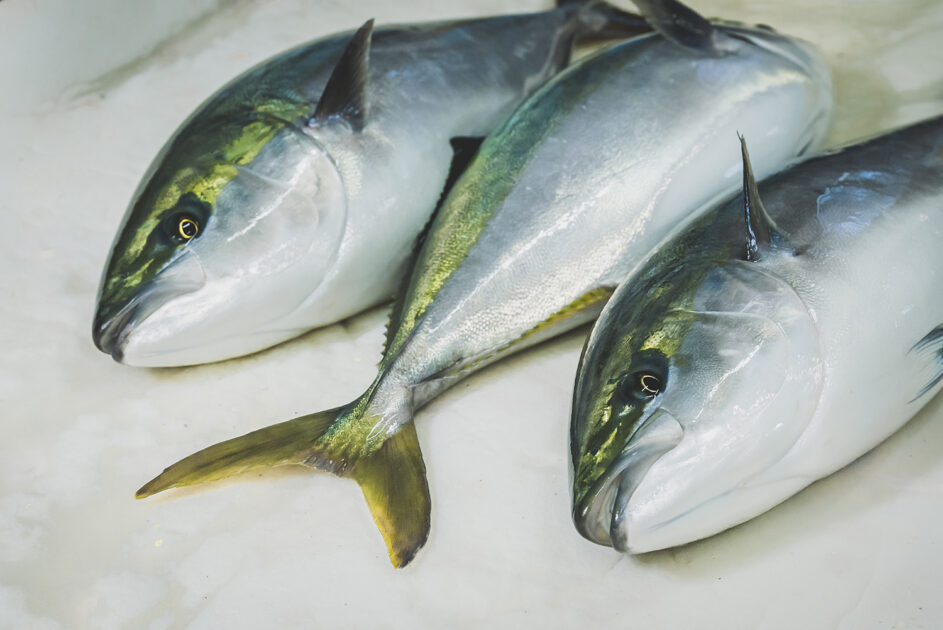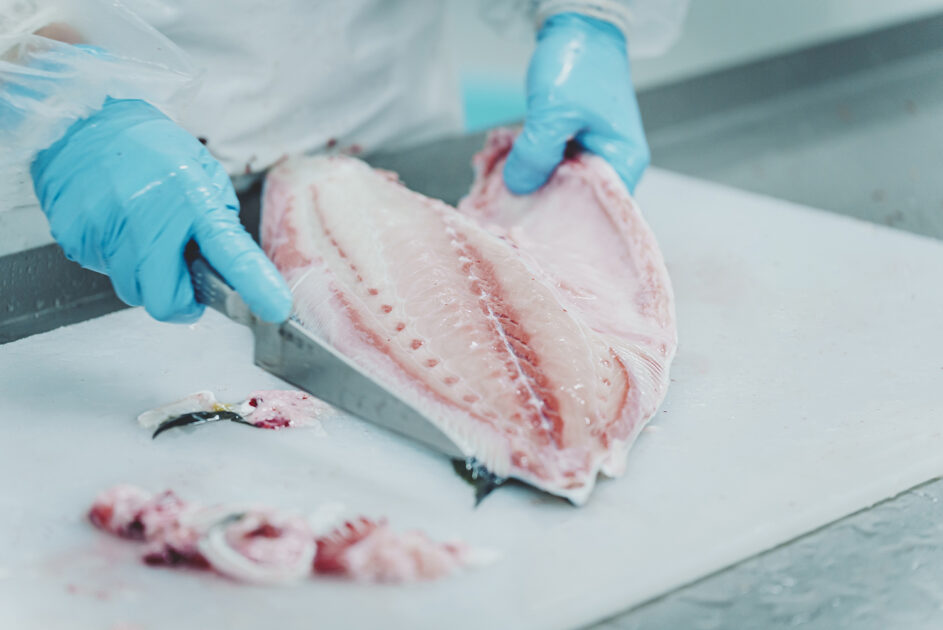How to identify, fillet, & preserve freshness of fish
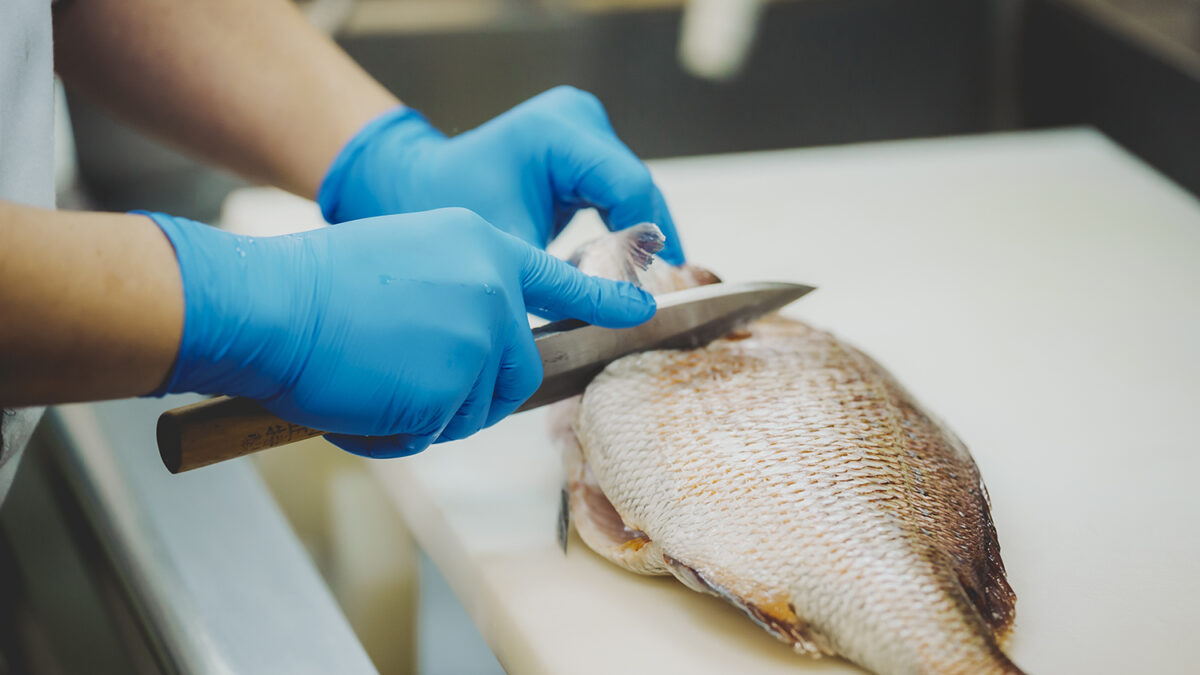
How to identify, fillet, and maintain a fish’s freshness. Tips and pointers provided by Dainichi’s employees that handle fish daily.
I asked a simple question to Dainichi’s seafood professionals that deal daily with fish.
PARTICIPANTS
Mr Hatakeyama, Production Management Group,
Chief Purchaser of Hamachi and Kampachi
Mr Seike, Production Management Group,
Chief Purchaser of Madai
Ms Kajiwara, Manufacturing Group,
Production of Moist Pellets
HOW TO DETERMINE FRESHNESS
I’m curious to learn more about fish and how it is prepared.
I am interested to find out how fish are being enjoyed by everyone! So I’d like to ask you several questions. But first, how do you know if a fish is fresh?
The points to look for will change depending on whether the fish is whole or has been cut into fillets.
Fish that have not been processed in any way are called ROUND. They are refered to as SEMI-DRESS if the gills and internal organs have been removed. If the viscera, gills, and head have been removed the fish are reffered to as DRESSED. And when the fish’s flesh is sliced away lengthwise from the backbone it is called a FILLET.
The name changes depending on the shape? What is the difference between a round and filleted fish?
When it comes to fillets, often found in stores, they are pre-cut and packaged. Have you ever noticed the sheet underneath them? Over time, moisture accumulates, resulting in what is referred to as drip. The fish’s freshness can be determined by the minimal accumulation of moisture, indicating less time has passed.
I understand. When it comes to round fish, what should we pay attention to? It seems trickier to evaluate compared to fillets.
You’re right, nowadays round fish might not be as commonly seen. The first key factor are the eyes. Check to see if the eyes are clear and not cloudy. The testure of the skin should be bright and shiny. Also, examine for any signs of drying, abrasions, or scales peeling off.
Regarding yellowtail, I usually check the intestity of the yellow line and body’ blue coloring. Additionally, I also make sure that the tail has not turned red.
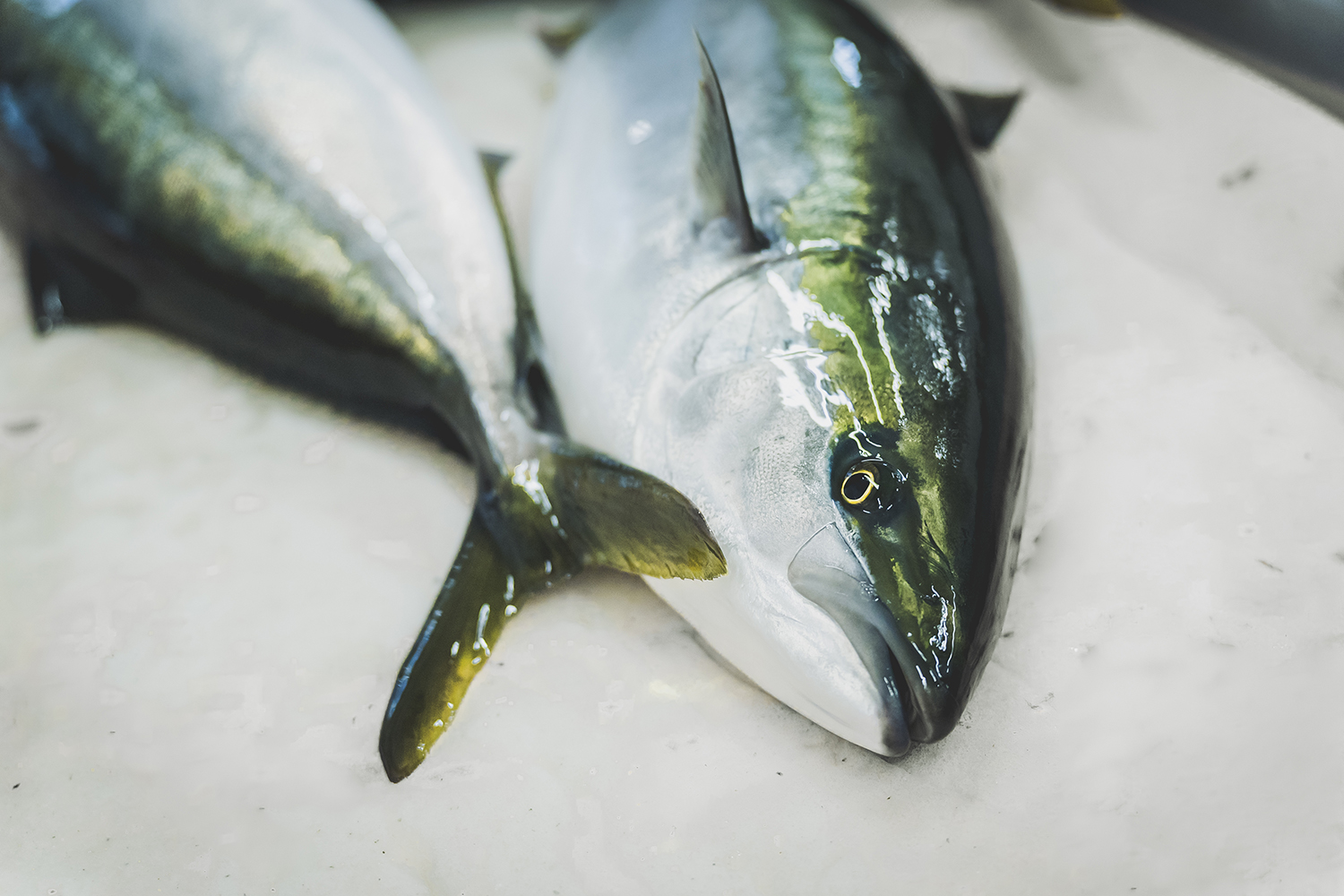
Have you ever actually touched it?
Sometimes I will hold a fish in my hands to inspect it, but it is proper etiquette to first ask the store staff for permission.
I’d like to see fish lined up in a store and see if I could judge them!
Please try it! But these days, I feel like the majority of restaurants and supermarkets have fresh fish. You should be grateful that you can always eat fresh fish.
TIPS FOR FILLETING FISH
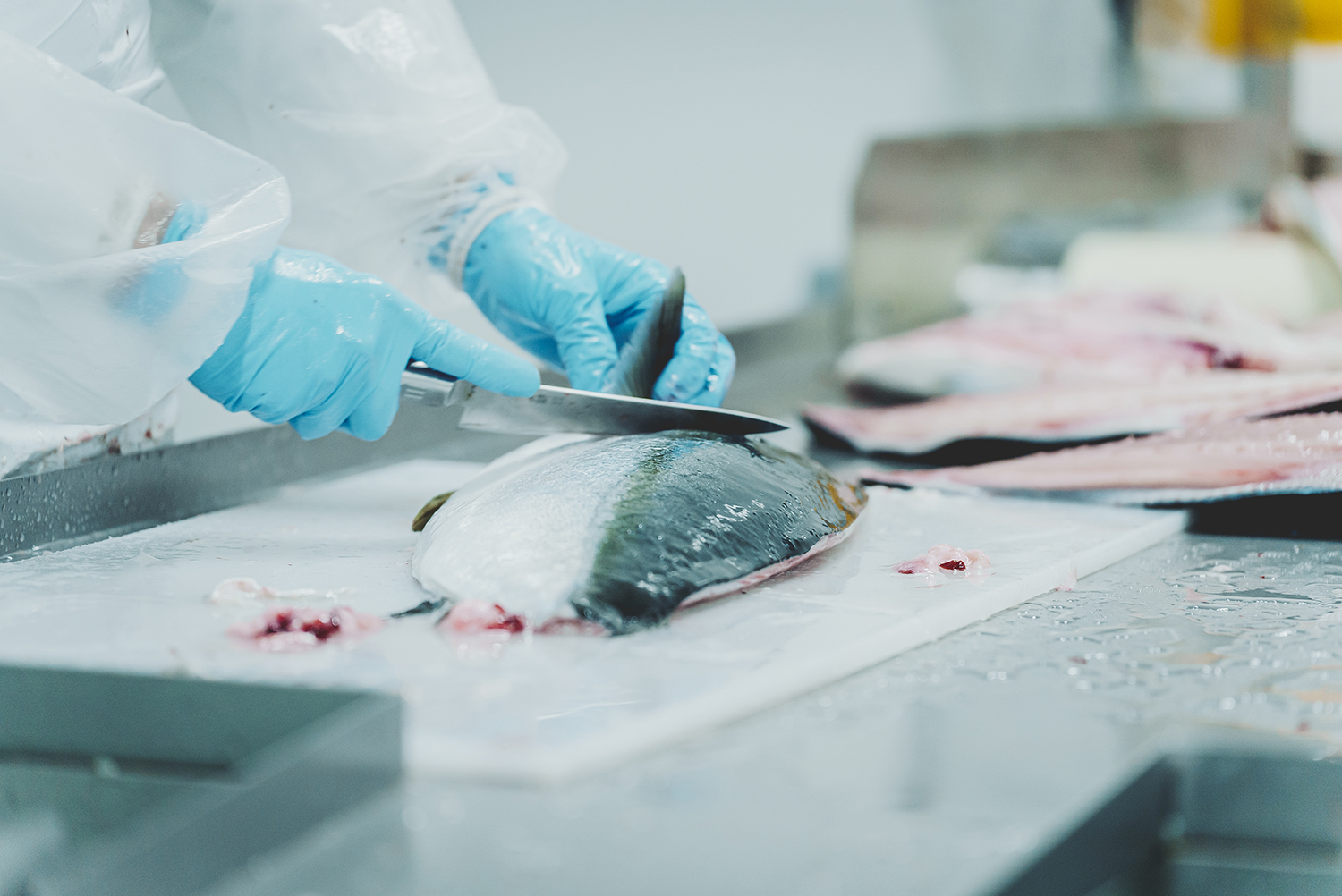
Do you have any specific tips regarding the knives or tools used for filleting fish?
Typically, at home a common Deba knife is used. But for larger fish, it’s recommended to use a longer-bladed knife to cleanly cut them in one motion, ensuring a neat cross-section of the flesh. It’s crucial to minimize pressing, pulling, or sawing actions.
The post-filleting process is crucial. When removing the head and gutting the fish, blood will stain the cutting board. After rinsing off the blood, it’s recommended to change the cutting board and handle the fish with minimal water to preserve its freshness.
After filleting, it’s best not to rinse it with too much water!
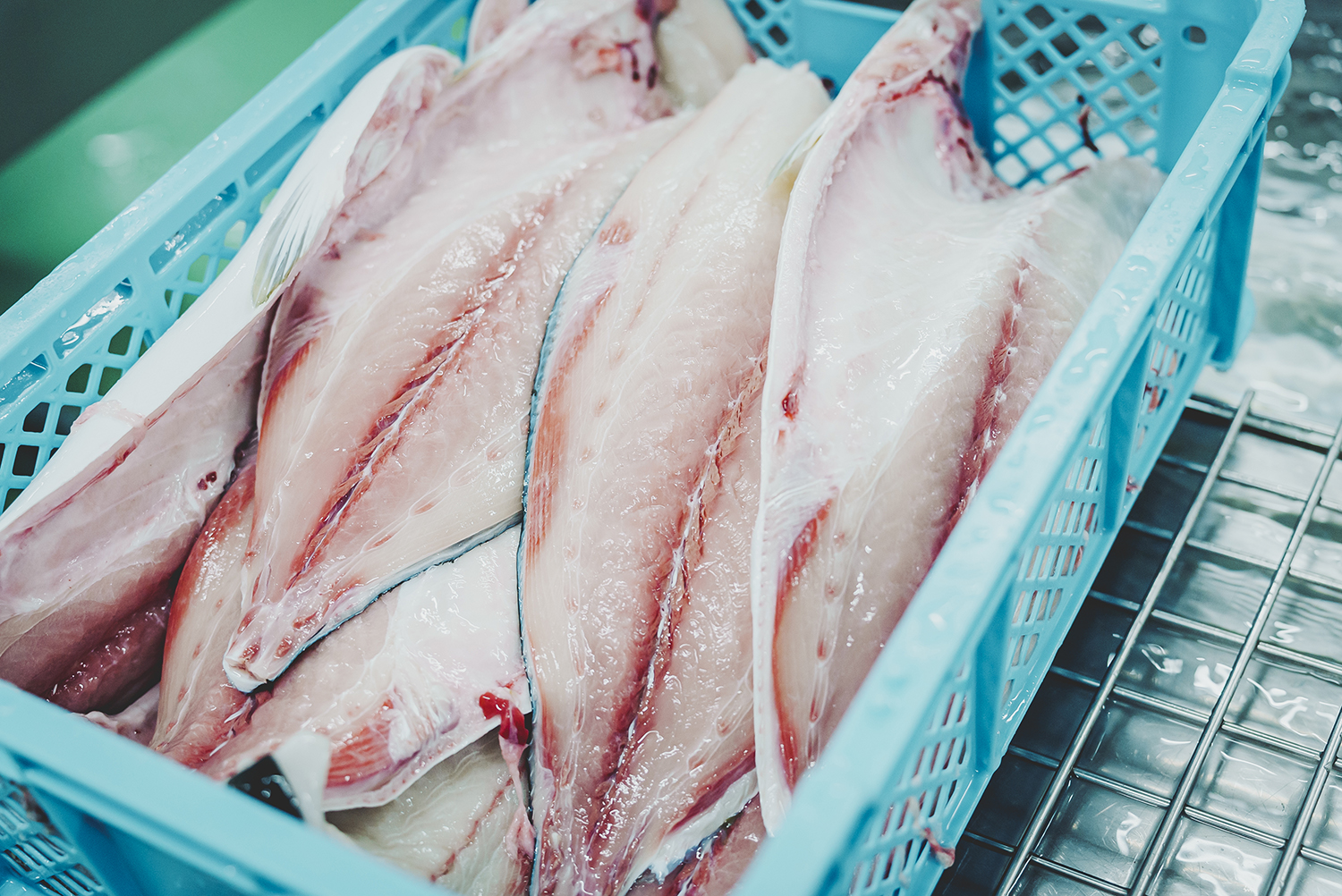
The filleting technique can vary based on your intended dish. When making sashimi, there’s no need to remove the scales if you plan to peel off the skin. Conversely, for simmered fish, it’s visually appealing to leave the skin intact.
Even thinking about what kind of dish to make seems enjoyable!
It’s wonderful because when you purchase a whole fish and fillet it at home, you can utilize it for a variety of dishes, which is both cost-effective and beneficial.
METHODS TO MAINTAIN FRESHNESS
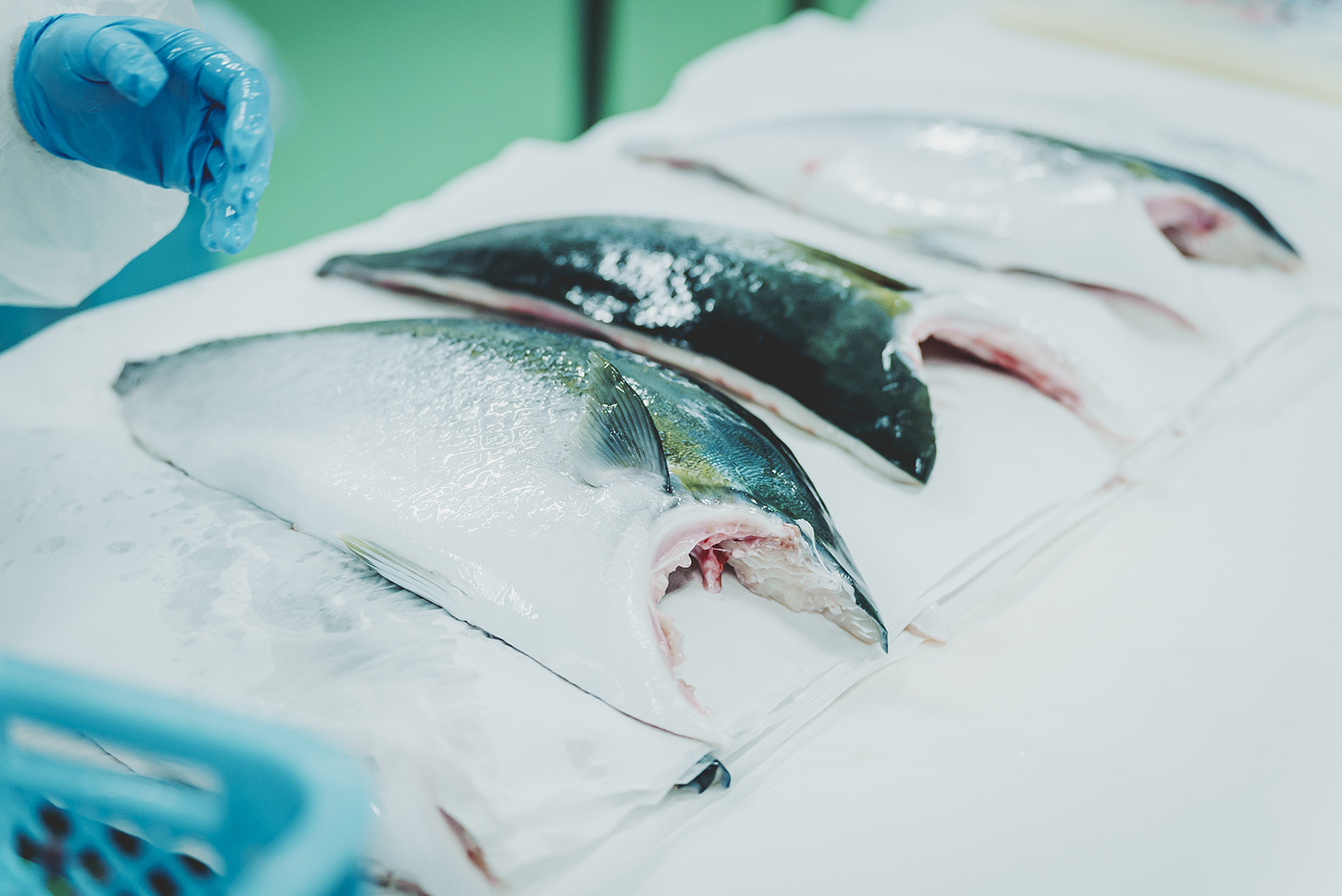
Since fish is highly sensitive to freshness, proper preservation methods are crucial. Is it insufficient to store it as-is in the refrigerator after purchase?
It varies depending on the type of fish, whether it’s a round fish or a fillet. For fillets, it’s advised to wrap them in kitchen paper, newspaper, or plastic wrap to remove excess moisture during storage. Freezing is also an option, and frozen fillets can be used for delicious dishes like simmered fish or fried preparations, which enhance the taste.
And what about round fish? Since they are sold whole, it might seem fine to just leave them as they are…
When it comes to round fish, it’s important to remove the head, guts, and thoroughly clean the bloodline. Blood and internal organs can spoil the fish. If you’re not eating it on the day of purchase, it’s best to clean the day of purchase to maintain freshness. It’s preferable store the dressed fish, with the bones and skin intact, until you’re ready to eat it.
VARYING COOKING METHODS・SEVERAL DAYS OF ENJOYING FISH

How do people usually enjoy eating fish?
When enjoying a large whole fish, we typically begin with sashimi and then move on to salt-grilling or frying. We prefer dividing it into smaller portions for a variety of dishes instead of making a single large dish.
The belly part of the fish is best as sashimi. The fish’s back is good simmered, and the tail fried. It’s enjoyable to try different cooking methods on the different parts of the fish.
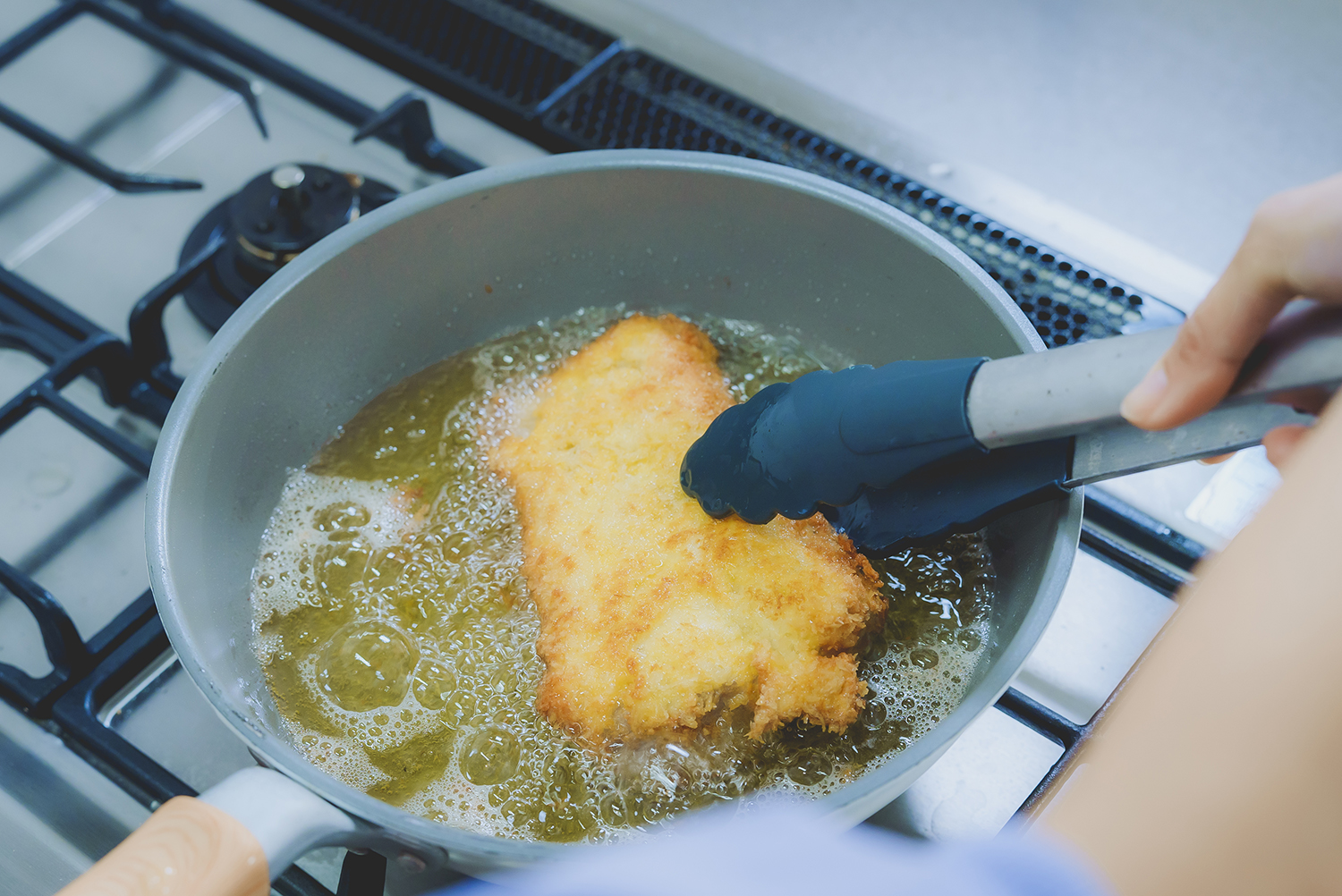
In my home, we enjoy yellowtail sashimi on the first day, yellowtail shabu-shabu on the second day, and simmered yellowtail on the third day.
In my hometown, during the New Year’s holiday we dry-age the yellowtail in a cool, dark place for several days. We then cut and consume it gradually as needed. This drying process enhances the flavor, making the flesh incredibly delicious.
There are so many ways to enjoy fish. I’m inspired to try cooking fish dishes using what I’ve learned today. Thank you for your help!

